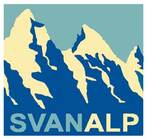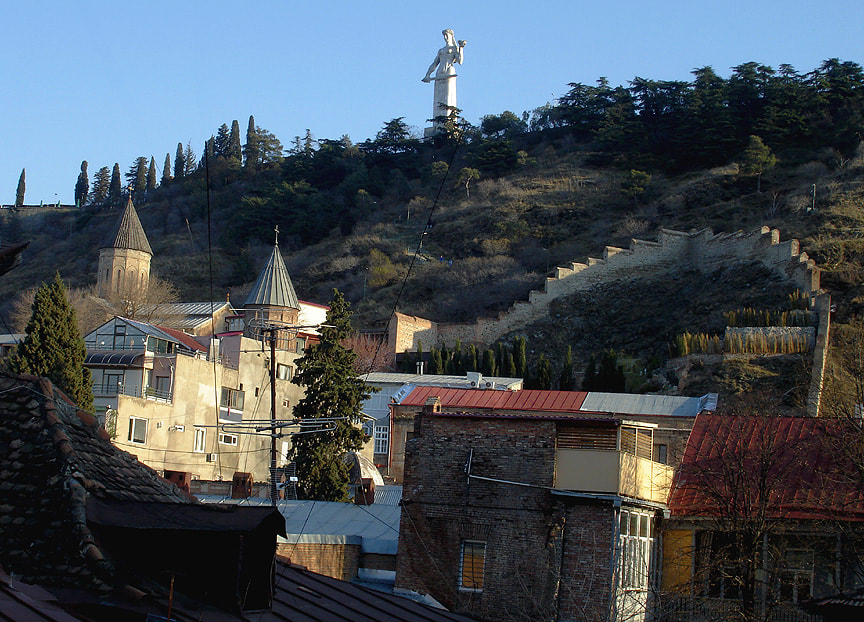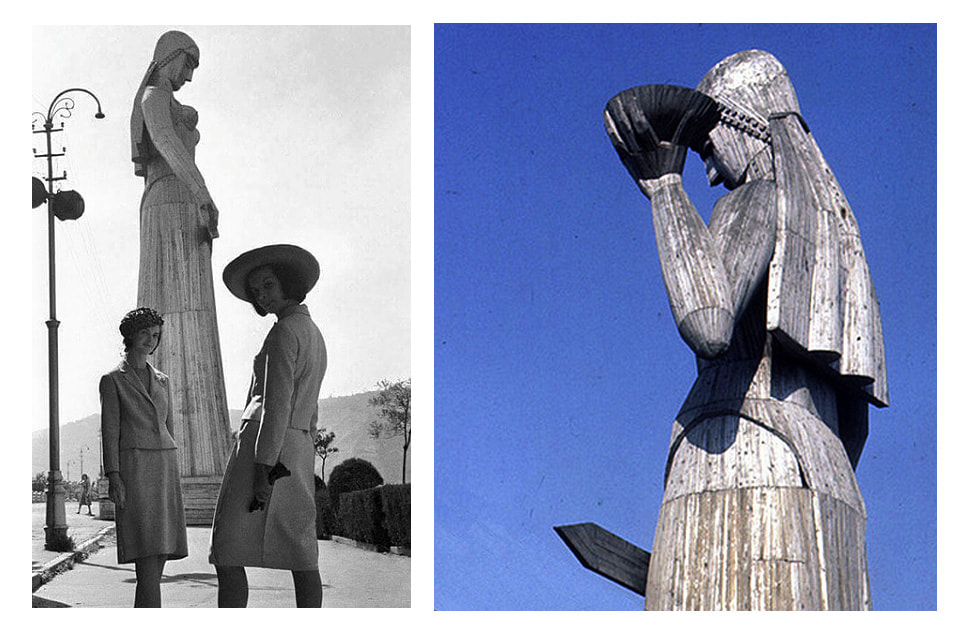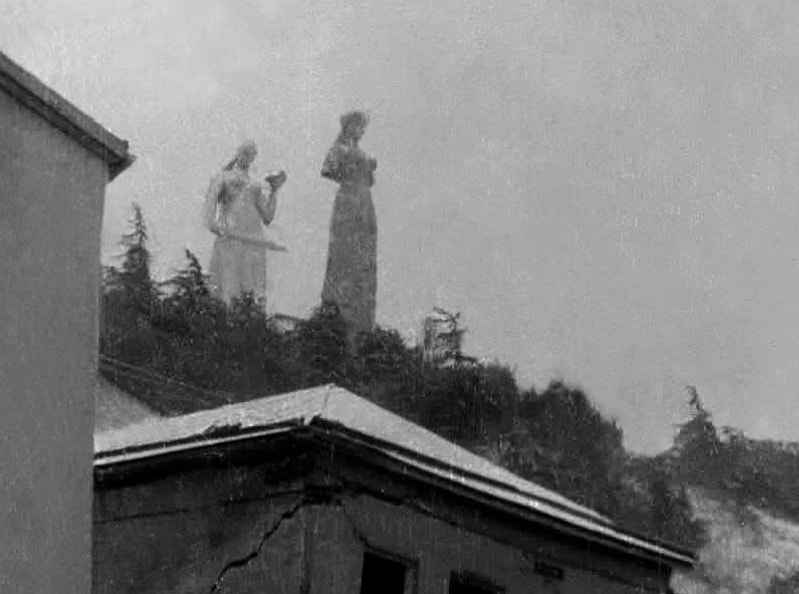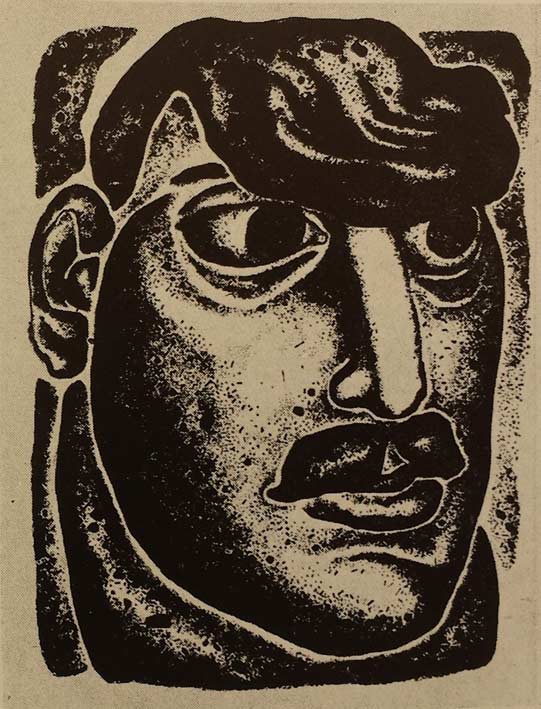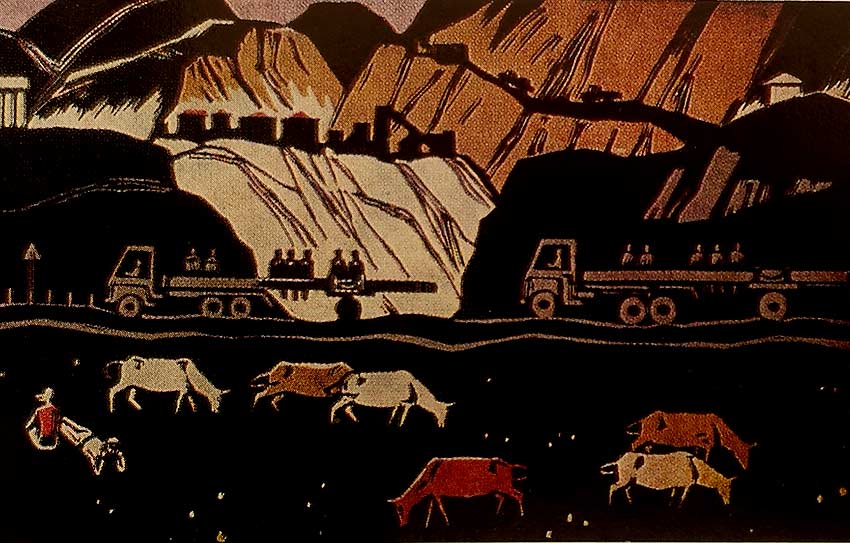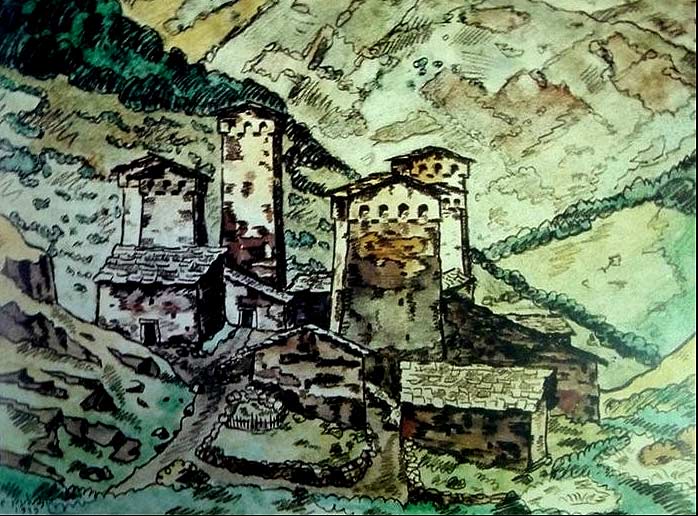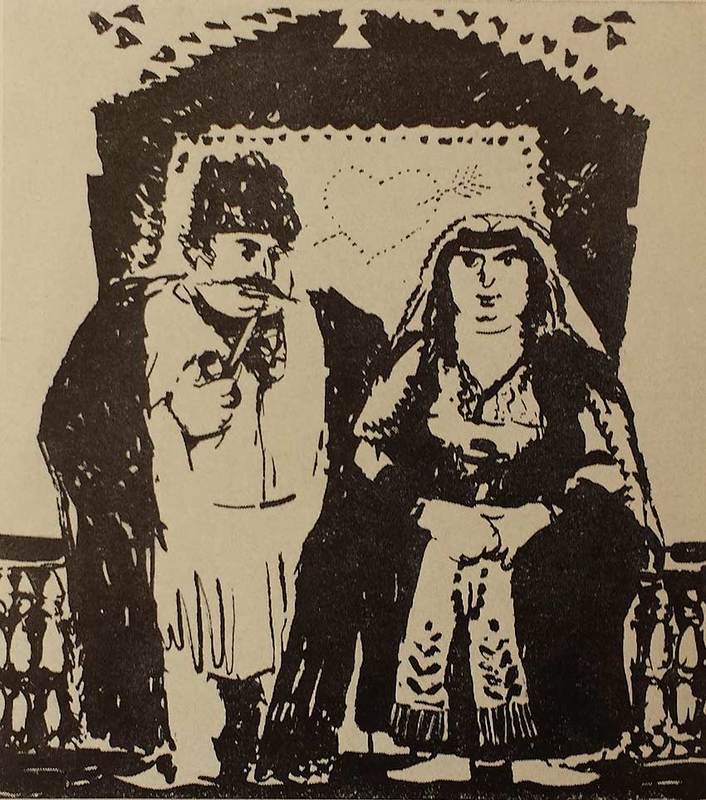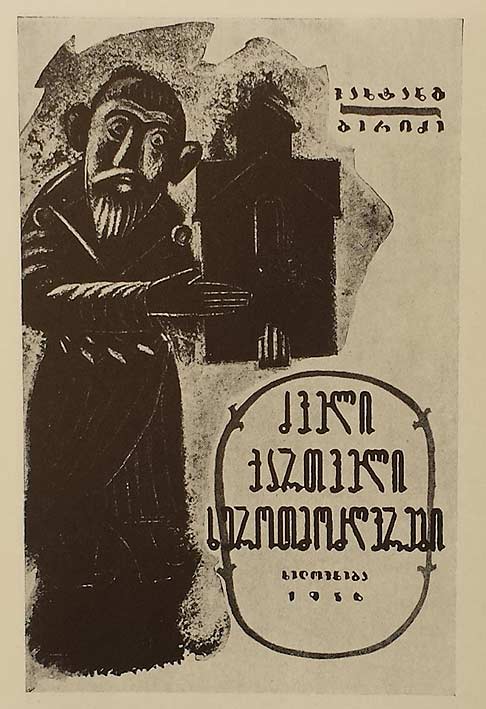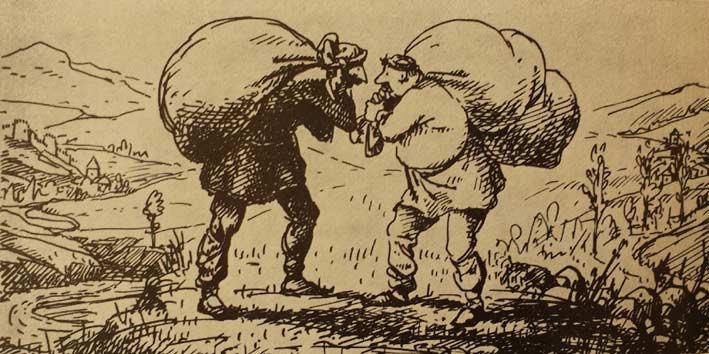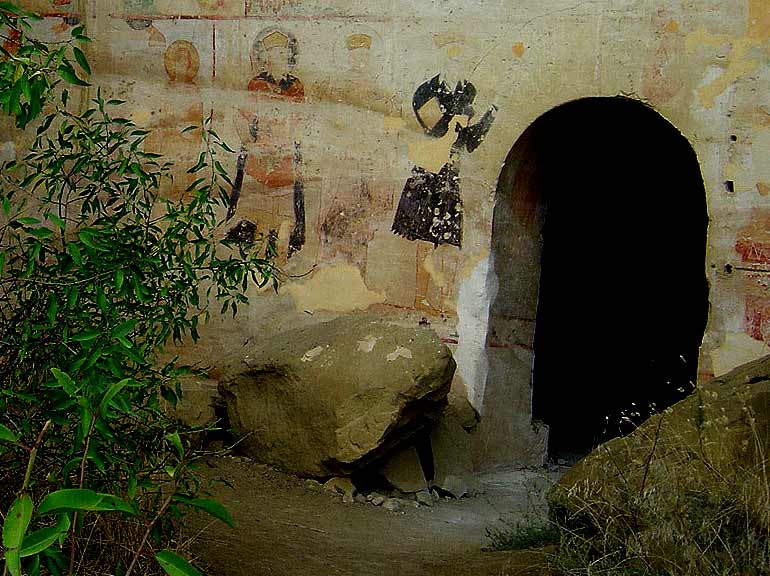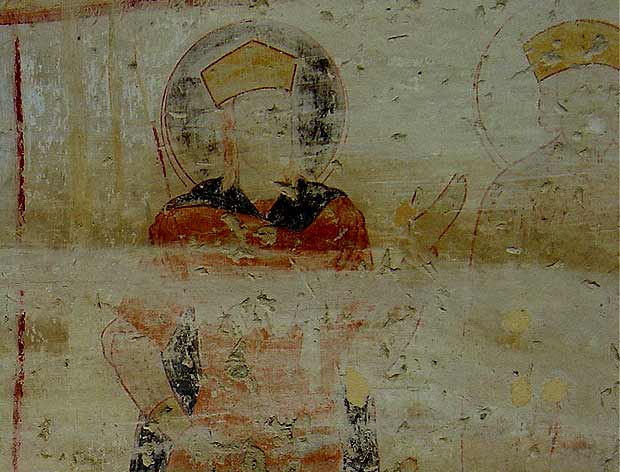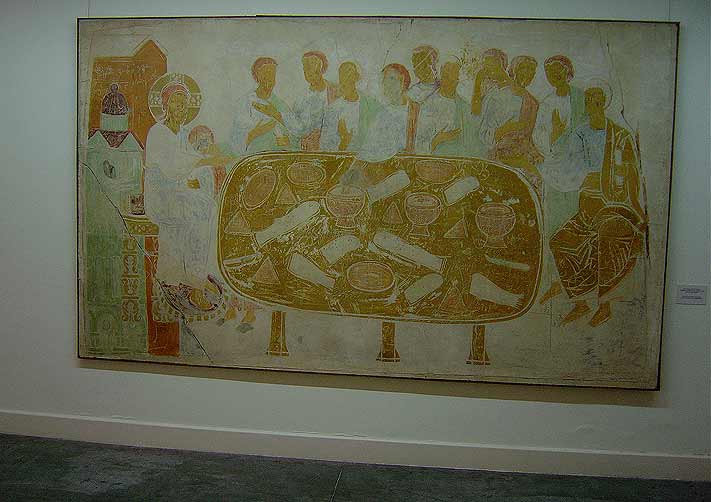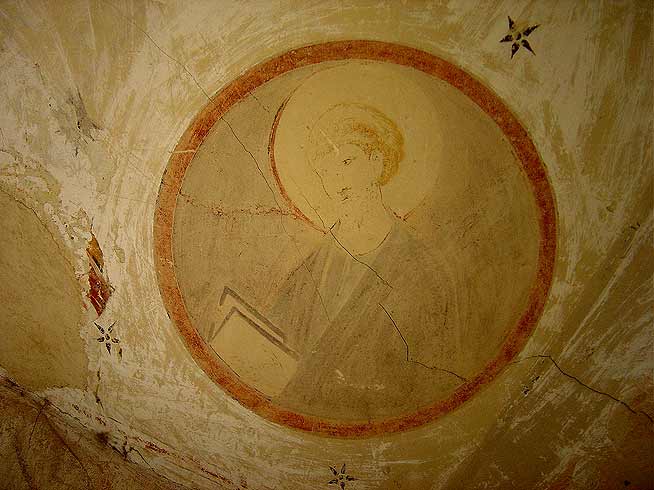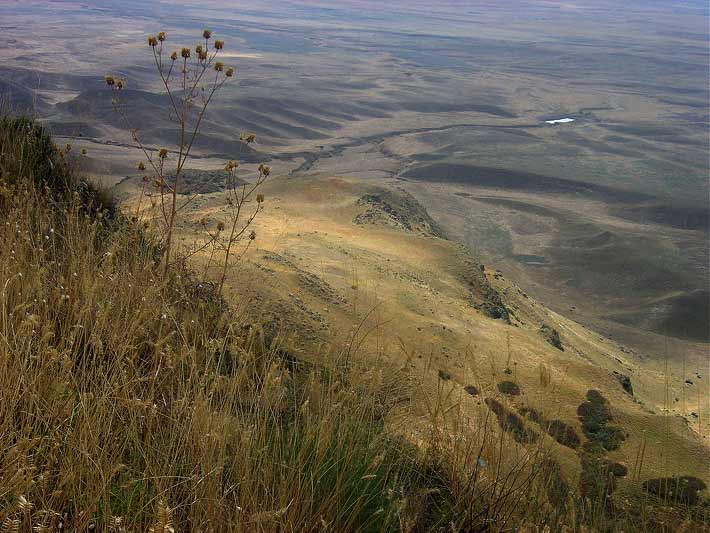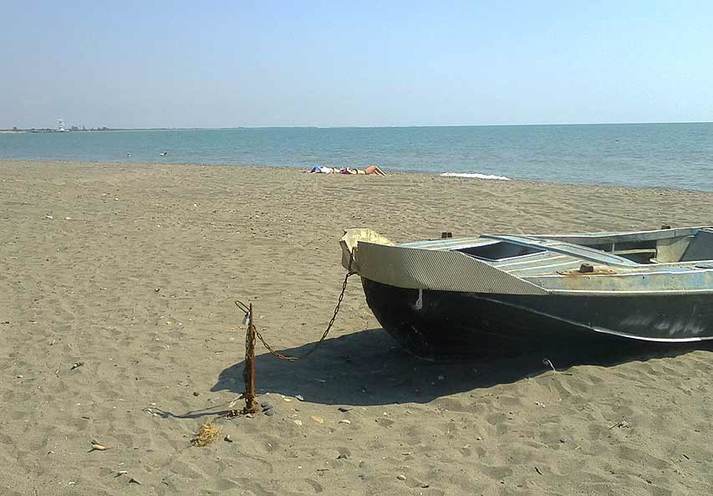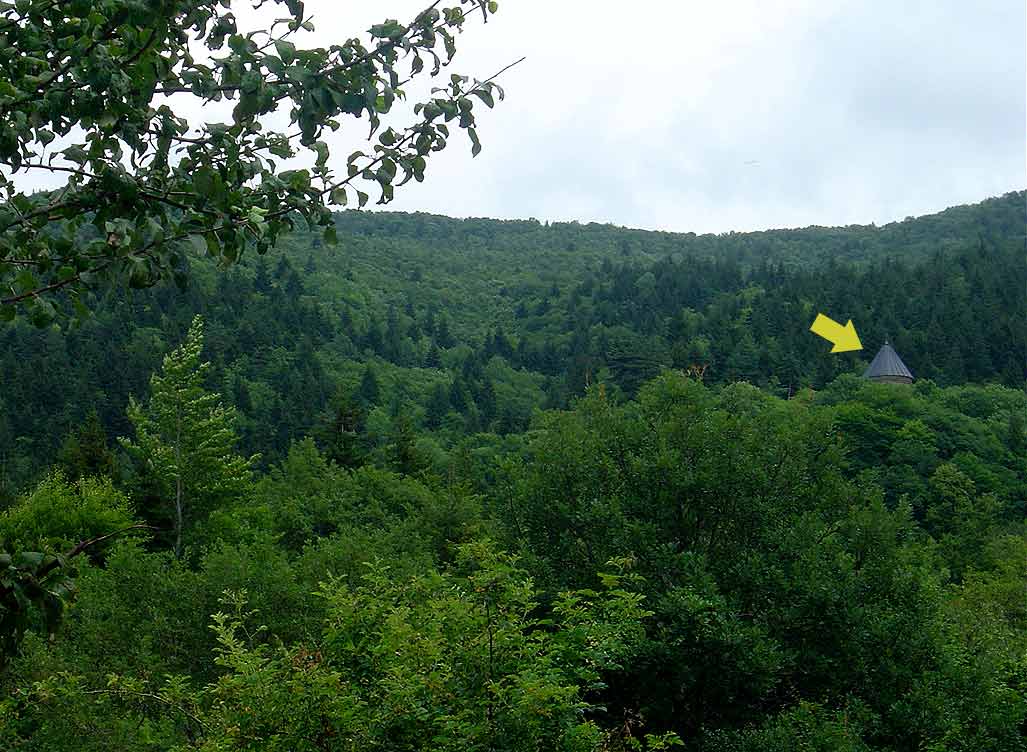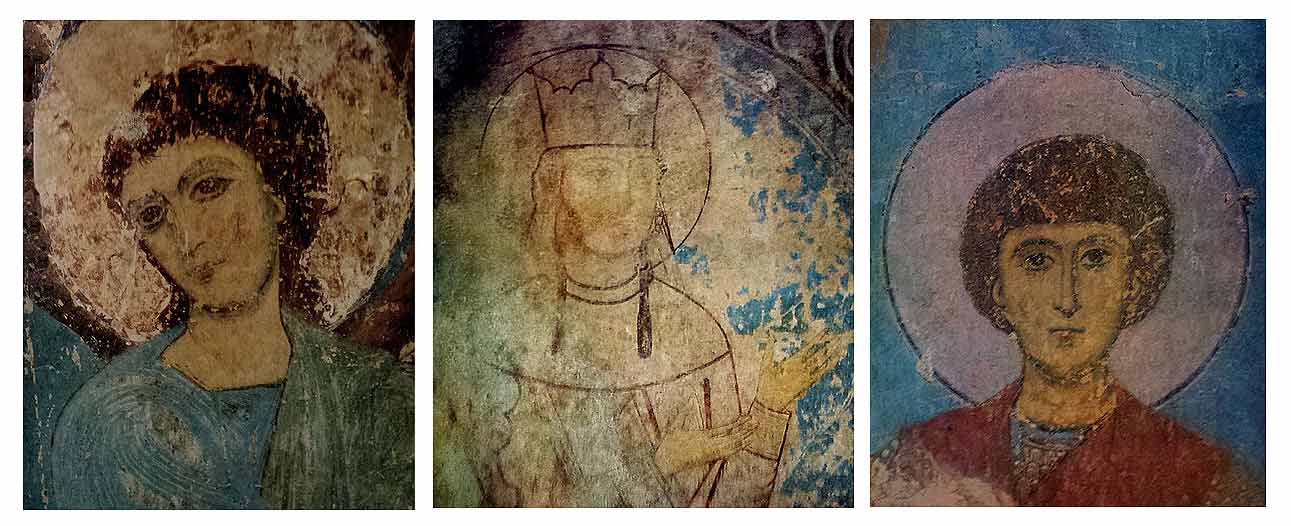GEORGIA
places - art - people
Thinking about attractive places to visit after our mountain trip?
Or just learn something new about the country?
Scroll down for some of my favorites.
Or just learn something new about the country?
Scroll down for some of my favorites.
:: Kartlis Deda (Mother of Kartli) statue ::
The profusion of gigantic statues in the former USSR doesn't of course mean that it was purely a soviet trend. True, there they were popular like nowhere else. However Statue of Liberty and Rio's Christ the Redeemer were built earlier and similar colossus are erected even these days (Statue of Unity).
Tbilisi (once the capital of Georgian Soviet Socialist Republic ) has it's own 20 meters high guardian dressed in concrete and standing on the crest of Sololaki Range overlooking the city.
Mother Kartli (designed by Elguja Amashukeli) is known to every visitor but very few know its interesting history.
Tbilisi (once the capital of Georgian Soviet Socialist Republic ) has it's own 20 meters high guardian dressed in concrete and standing on the crest of Sololaki Range overlooking the city.
Mother Kartli (designed by Elguja Amashukeli) is known to every visitor but very few know its interesting history.
1958
Tbilisi celebrates its 1500th anniversary and the wooden lady with sword and chalice commemorates this event.
But why is it made of wood? Because it won't be there permanently. Or maybe it is?
But why is it made of wood? Because it won't be there permanently. Or maybe it is?
1963
Citizens of Tbilisi like the statue and want to have it for years to come.
The decision it to cover it with aluminium to prevent rot. Done!
The decision it to cover it with aluminium to prevent rot. Done!
1990th
Georgia is already independent but its economy have seen better days.
The statue must to be replaced because it starts to fall apart...
Despite city's limited budget Mother Kartli 2 is designed and built using concrete panels.
For two days they even stand together!
The statue must to be replaced because it starts to fall apart...
Despite city's limited budget Mother Kartli 2 is designed and built using concrete panels.
For two days they even stand together!
Today
Mother Kartli 2 is still there!
If you ask me what I think about it ... The first one was more feminine and at the same time more abstract. Also the downcast gaze was more traditional just as her head cover. Still, I wish the wood-made Mother was there. ..
In general I am not a big fan of this rather tasteless giant statue but as a focal point it works rather well.
If you ask me what I think about it ... The first one was more feminine and at the same time more abstract. Also the downcast gaze was more traditional just as her head cover. Still, I wish the wood-made Mother was there. ..
In general I am not a big fan of this rather tasteless giant statue but as a focal point it works rather well.
:: Graphic Arts of Georgia. 20th century ::
1. A. Bandzeladze, Portarait of Arsen, 1964 Arsen Odzelashvili (1797— 1842) was a Georgian outlaw said to have robbed the rich to help the poor. Here is his portrait from the beautifully designed book "Song of Arsen".
2. D. Nodia, Roads of Inguri, 1968 Color woodcut is among the most complex techniques of printmaking. Here the modern world of machinery and human will is juxtaposed with traditional ways.
3. D.Kakabadze, Svaneti, 1929 One of the prominent Georgian artists of 20th century he made number of watercolor drawings which documented Svaneti just before the road from Zugdidi was constructed.
2. D. Nodia, Roads of Inguri, 1968 Color woodcut is among the most complex techniques of printmaking. Here the modern world of machinery and human will is juxtaposed with traditional ways.
3. D.Kakabadze, Svaneti, 1929 One of the prominent Georgian artists of 20th century he made number of watercolor drawings which documented Svaneti just before the road from Zugdidi was constructed.
1. L.Zambakhidze, Folk Tales, 1969 This pen and ink drawing perfectly conveys terse yet expressive language of folk tales.
2. D.Gabashvili, Architects of Ancient Georgia, 1956 This memorable drawing is based on well-known stone relief.
3. S.Kobuladze, Folk Tales, 1954 Excellent example of etching technique.
2. D.Gabashvili, Architects of Ancient Georgia, 1956 This memorable drawing is based on well-known stone relief.
3. S.Kobuladze, Folk Tales, 1954 Excellent example of etching technique.
:: Davit Gareja cave monasteries ::
Very close to Tbilisi and to my mind in many ways is superior to Vardzia. Some people will be offended to hear this because of Vardzia's almost iconic status. But the place though it's value and beauty is unquestionable became so popular that the whole experience is already tarnished by crowds and noise.
To avoid explanation boards, hand railings and slightly artificial atmosphere you might consider visiting Davit Gareja.
Every step there will bring a sense of discovery.
Nothing in Davit Gareja is polished so nature and art are linked here in harmony (photo above). True, most of the frescoes (IX-XVII centuries) are poorly preserved but this doesn't damage the powerful impression they leave. On the contrary.
Old paints dried and disappeared baring initial drawing with lines of rare beauty (image below).
To avoid explanation boards, hand railings and slightly artificial atmosphere you might consider visiting Davit Gareja.
Every step there will bring a sense of discovery.
Nothing in Davit Gareja is polished so nature and art are linked here in harmony (photo above). True, most of the frescoes (IX-XVII centuries) are poorly preserved but this doesn't damage the powerful impression they leave. On the contrary.
Old paints dried and disappeared baring initial drawing with lines of rare beauty (image below).
In Soviet time there was a practice to make an exact copies of frescoes from around Georgia so to preserve them for the future. Some of the best artists were employed for this task and it might be a better solution than to make a merciless restoration.
photo below: "The Last Supper" from Davit Gareja, copy by Ketevan Magalashvili, National Museum of Georgia
photo below: "The Last Supper" from Davit Gareja, copy by Ketevan Magalashvili, National Museum of Georgia
Moving between the caves you may notice the wide range of styles. Some are reminiscent of Cappadocian painting, others bring to mind even the French Romanesque frescoes.
Suddenly on the bare ceiling you notice a subtle image of apostle that miraculously survived all those centuries (image below).
Suddenly on the bare ceiling you notice a subtle image of apostle that miraculously survived all those centuries (image below).
Semi-desert environment of the caves is green in the spring but gets brown and ochre in summer heat. Coming to Udabno after subtropical Batumi and high places of the Caucasus you start to realize how much variety this small country has.
The easiest way to visit Davit Gareja is taking a day tour using Gareji Line (visit their fb page for details). After arrival head for the caves and don't waste time at newer Lavra. They are on the other side of the range and it takes 20 minutes to reach them.
Enjoy!
Enjoy!
:: Short swim in the Black Sea ::
photo: this beach is 15 min walk from the civilized part of Anaklia resort. It has few people but shade is scarce.
Anaklia was initially planned to become another Batumi. However it didn't happen. It's position away from the Turkish border is one reason, others are numerous and not to be discussed here.
While Anaklia is left behind Batumi it still has some decent infrastructure. You can wash yourself after swim, seat at the seaside cafe and enjoy sandy beaches that are quite clean.
After travels in Svaneti this is the best place to soak your weary limbs in salty water.
Don't expect too much from this resort and you won't be disappointed *
If you travel from Mestia to Tbilisi by train you will have to take "marshrutka" (shared taxi) to Zugdidi (ask driver to drop you near the train station). If you leave Mestia early (8-9 o'clock in the morning) you will arrive to Zugdidi by noon and will have another 10 hours to wait for the night train (the night train will bring you to Tbilisi at 6AM which is preferred choice for some people).
* On sunny days only, rainy weather on the Black Sea is miserable
Suggested plan is as such:
1. At the train station buy ticket to Tbilisi (if you didn't buy it in advance)
2. Leave your belonging at left-luggage (train station)
3. Visit Zugdidi market to buy fruits, bread, cheese.
4. Take "marshrutka" ( 1,5 lari) or private taxi (20 lari) to Anaklia
5. Swim, sun-bath and sip beer at promenade
6. Return to Zugdidi and catch a night train (around 10PM)
To find marshrutka to Anaklia you have to walk 10 minutes along Rustaveli street (turn left after leaving train station) then turn left again before the bridge (market is after the bridge on your right). You will see many shops on both sides of the wide commercial street. Marshrutka to Anaklia is behind (ask if in doubt) shops on the right. Private taxi is much a better option than crowded marshrutka.
While Anaklia is left behind Batumi it still has some decent infrastructure. You can wash yourself after swim, seat at the seaside cafe and enjoy sandy beaches that are quite clean.
After travels in Svaneti this is the best place to soak your weary limbs in salty water.
Don't expect too much from this resort and you won't be disappointed *
If you travel from Mestia to Tbilisi by train you will have to take "marshrutka" (shared taxi) to Zugdidi (ask driver to drop you near the train station). If you leave Mestia early (8-9 o'clock in the morning) you will arrive to Zugdidi by noon and will have another 10 hours to wait for the night train (the night train will bring you to Tbilisi at 6AM which is preferred choice for some people).
* On sunny days only, rainy weather on the Black Sea is miserable
Suggested plan is as such:
1. At the train station buy ticket to Tbilisi (if you didn't buy it in advance)
2. Leave your belonging at left-luggage (train station)
3. Visit Zugdidi market to buy fruits, bread, cheese.
4. Take "marshrutka" ( 1,5 lari) or private taxi (20 lari) to Anaklia
5. Swim, sun-bath and sip beer at promenade
6. Return to Zugdidi and catch a night train (around 10PM)
To find marshrutka to Anaklia you have to walk 10 minutes along Rustaveli street (turn left after leaving train station) then turn left again before the bridge (market is after the bridge on your right). You will see many shops on both sides of the wide commercial street. Marshrutka to Anaklia is behind (ask if in doubt) shops on the right. Private taxi is much a better option than crowded marshrutka.
:: Kintsvisi Cathedral ::
Because of it's proximity to Tbilisi, Mtskheta is the most popular destination. No doubt, both Svetitskhoveli Cathedral and ancient Dzhvari (on the hill) deserve this attention.
However, the greatest masterpiece of Georgian monumental painting is not there...
To see it you have to get off near the small town of Kareli (on the Tbilisi - Batumi highway) and take either taxi or local transport that will bring you to the village named Vedreba . From there you will walk 30 minutes uphill till you reach the St.Nicolas Cathedral of Kintsvisi.
It's frescoes* belong to epoch when Georgian Art reached it's most sublime.
They were created between 1207 and 1213 during the reign of Queen Tamar (Tamar Mepe) who's portrait was painted here together with her son Giorgi Lasha and King Giorgi III (already dead at that time).
"Kintsvisi Angel" (featured in most books on Medieval Georgian Art) is seen above them. Note also how beautiful is the blue background of these frescoes making the interior even more spacious and bright.
On the hot day descend to the wooded and cool Kintsvirula valley behind the church. Here you will experience something that well known destinations lack - peace and connection to this ancient land.
*To be precise these are secco - painted on dry plaster, not on wet surface as in fresco technique and hence it's poor state of preservation.
image below: Kintsvisi Angel, Queen Tamar, St.George
However, the greatest masterpiece of Georgian monumental painting is not there...
To see it you have to get off near the small town of Kareli (on the Tbilisi - Batumi highway) and take either taxi or local transport that will bring you to the village named Vedreba . From there you will walk 30 minutes uphill till you reach the St.Nicolas Cathedral of Kintsvisi.
It's frescoes* belong to epoch when Georgian Art reached it's most sublime.
They were created between 1207 and 1213 during the reign of Queen Tamar (Tamar Mepe) who's portrait was painted here together with her son Giorgi Lasha and King Giorgi III (already dead at that time).
"Kintsvisi Angel" (featured in most books on Medieval Georgian Art) is seen above them. Note also how beautiful is the blue background of these frescoes making the interior even more spacious and bright.
On the hot day descend to the wooded and cool Kintsvirula valley behind the church. Here you will experience something that well known destinations lack - peace and connection to this ancient land.
*To be precise these are secco - painted on dry plaster, not on wet surface as in fresco technique and hence it's poor state of preservation.
image below: Kintsvisi Angel, Queen Tamar, St.George
